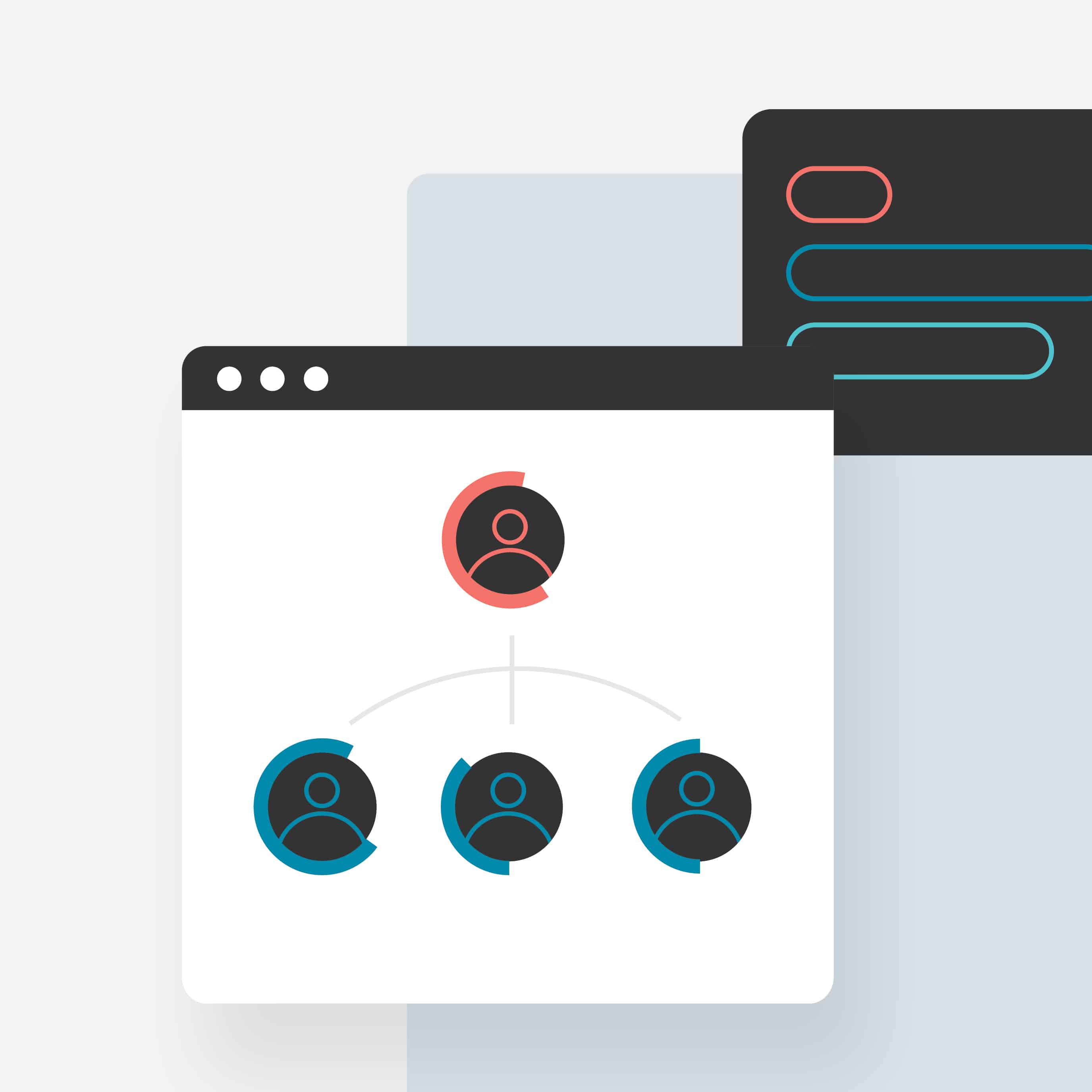Many companies have embraced agility in recent years. The more the world changes in unpredictable ways, the more critical it is for us to react nimbly. Yet performance management processes have largely been stagnant. To achieve agility across the organization, you need to embrace agile performance management.
Performance management in the pandemic forced changes in the way we manage performance today. Although agility was trending before COVID-19, companies had to become agile to survive. Customers’ needs changed overnight, and companies needed to react quickly to stay in the game.
But we don’t need to wait for dire circumstances to implement agile processes. Employee performance is the life force of your company. If employees can’t adjust in the face of change or support sudden shifts in business priorities, the whole company suffers.
By implementing agile performance management, you can enable employees to meet the business’s evolving needs and propel the company forward. Here’s everything you need to know about why agile performance management is essential and how to implement it at your organization.
Agile vs. Traditional Performance Management
Traditionally, performance management has been isolated to the performance-based annual review process. Under this model, managers evaluate performance but don’t give real-time feedback that helps employees improve. Traditional performance management produces data on performance consistently but with low frequency (typically only once or twice per year).
Traditional performance management can catch employees off guard. When too much time passes between an employee’s actions and when they’re evaluated, they may be surprised by what turns up on their review. Those feelings of distrust make it challenging to have a productive conversation about performance improvement.
Agile performance management is responsive and happens in the day-to-day interactions between employees and their managers. It’s a process of continuous performance management that remains alert to internal and external changes and the impact those changes have on individual performance.
Frequent conversations keep managers and employees on the same page. Because managers give employees feedback in the workflow, employees know what to expect from their formal quarterly reviews.
Organizations that practice agile performance management are more nimble and can shift priorities as needed.
Benefits Of Agile Performance Management
Shifting to an agile performance management system produces significant benefits on several levels.
At the one-on-one level, agile performance management improves daily performance and allows managers to see their reports’ strengths and weaknesses in real time. Developing a cadence of frequent check-ins empowers employees to bring concerns and roadblocks to their managers, who act as coaches to help their reports overcome challenges. Team members can take direction from their managers to constantly improve their performance.
At the team level, agile performance management gives team leaders a clearer picture of the team’s capabilities, supporting its ability to pivot as business priorities evolve. Agile performance management enables teams to work together more effectively. Managers can focus on coaching employees and ensuring the work gets done on time and under budget. Team members become more reliable performers, which moves the whole team forward.
Agile performance management produces mountains of performance data at the business level, allowing HR to track organizational capabilities. These trends set a baseline for the workforce’s strengths and weaknesses, which creates an essential starting point for developing talent strategy and moving business priorities forward.
Agile performance management elevates the entire organization by cultivating greater self-awareness and providing direction for rapid growth.
6 Steps to Implement Agile Performance Management
Agile performance management requires active participation from managers, employees, and human resources. To be successful, you’ll need to develop training and set guidelines for frequent feedback and formal check-ins.
Here are six steps to implementing agile performance management at your company.
Schedule Frequent Performance Check-Ins
For the most part, agile performance management happens in the workflow, addressing concerns as they arise. But formal, scheduled check-ins are critical to implementing agile performance management, too, and these need to happen much more often than the traditional annual review.
Many companies have shifted to a quarterly check-in system, allowing managers to gather three months’ worth of performance data to assess and share back with the employee. Managers can gather data by tracking daily conversations with employees or taking notes on performance to discuss in their next one-on-one.
At the formal check-in, share the data collected during the previous three months with the employee. Show them trends in their performance improvement and growth, as well as points where they’re in danger of underperforming. Managers should collaborate with employees to determine the best path to improved performance.
HR can use the data accumulated during formal check-ins to track organizational capabilities and spot weaknesses to overcome in the next quarter.
Experiment With Agile Performance Management Tools
A comprehensive performance management system lets you see what tasks are in process and how long they’re taking. This information is an important starting point for regular check-ins.
Since many companies have adopted hybrid or remote work, managers probably can’t see when employees are struggling — and employees themselves may not volunteer the information. But timekeeping data combined with quality oversight will provide clues. If an employee spends a lot of time on a task without producing quality work, managers need to probe for underlying issues, such as unclear directions or poor training.
An objectives and key results (OKR) framework can support agile performance management by aligning everyday performance with business priorities. OKR software allows managers to see their team’s performance objectives, take notes on employee performance, and track conversations between both parties.
Provide the Agile Performance Management Training
Traditionally, performance management has been isolated to an annual performance review. Before implementing agile performance management, you’ll have to train managers to give real-time feedback, assess daily performance, and talk to employees about their concerns.
Managers need to become performance coaches rather than judge and jury. Train them to recognize when performance is going off track and then offer constructive feedback to mitigate the situation. For feedback to be beneficial for employees, it shouldn’t come across as judgmental, and it must provide direction for growth.
Managers need better listening skills, too. When they genuinely hear an employee’s concerns, managers will become more alert to potential problems. Implement regular training among managers to help them hone their communication skills and emotional intelligence.
Beyond their interactions with employees, train managers to collect better performance data. To collect cleaner data, provide performance check-in forms to prompt objective answers to specific questions.
Commit to Practicing Continuous Feedback
A high-frequency communication plan is critical to achieving performance agility. Managers need to offer regular performance feedback to employees. It should become part of the daily process, especially as challenges arise.
When managers and employees develop frequent communication habits, their relationships will strengthen. Employees need to trust that their managers share and support their goal of performing at their best. Regular communication enables better collaboration between managers and employees to facilitate that goal.
Managers should also be open to receiving feedback from employees regarding their workload, obstacles they’re facing, and the quality and helpfulness of the manager’s feedback.
Upskills and Reskill Your Workforce
Agile performance management helps you identify gaps in the workforce’s skills. Once you’ve pinpointed those gaps, take steps to close them. Using the performance data as a starting point, add modules to your training and your learning and development programs. Use the resulting formal performance check-in data to assess your new modules’ effectiveness.
Train managers on the organization’s learning and development offerings so they can use them when coaching employees. Have managers suggest specific courses or training programs to employees to help them upskill and eliminate performance weaknesses.
As your customers’ needs change and business priorities evolve, developing your workforce is your best defense against falling behind your competitors.
Establish Individual OKRs That Support Performance Agility
OKRs aren’t a proxy for performance management, but using the framework strengthens your performance agility. OKRs tie individual goals directly to organizational goals, and as those change, it’s easier to pivot employee goal setting to keep everyone moving in the same direction.
Each employee should have three to five quarterly performance objectives aligned with business priorities. Each goal should be measurable with precise key results. To use key results to assess performance, they must accurately indicate when tasks are completed successfully.
How to Transition From Traditional to Agile Performance Management
While the conversation around performance management has shifted significantly in recent years, the actual processes have been slower to evolve.
The first step in transitioning to agile performance management is to audit your current performance management process. Are there feedback channels and mechanisms in place, for example? How often are employees receiving feedback? Is the input they receive actionable?
If you don’t have a set performance management system with checks and balances already in place, you may find that different departments and teams have customized their own performance management systems. Try to identify each of these programs’ best parts, and collect input from the managers and employees currently using them.
Once you’ve visualized your current system, determine your objectives for the new program, and set key results that indicate success or failure to meet those objectives. Next, identify the most functional and agile processes from your current systems. Preserve those, and find ways to further enable that agility.
For example, many companies have implemented daily standups, where employees can share their priorities for the day and identify potential roadblocks to their success. This process is easy to replicate and sets a cadence for regular communication among team members.
Incorporate quarterly formal performance evaluations. Have managers record performance data over time so that employees can see their growth and progress. This process allows managers and employees to collaborate in identifying consistent roadblocks to performance.
Train managers to check in regularly with their team members. Frequent communication builds trust, which supports a self-sustaining continuous feedback loop. Employees will be more likely to go to their managers to help them remove roadblocks if they aren’t afraid of being chastised or disappointing them. Train managers to offer constructive, actionable feedback and to remove roadblocks to achieve performance objectives.
Once your new agile performance management system is in place, survey managers and employees to assess its effectiveness. Implementing any new program — especially one as intense as this — requires monitoring for key results. If you aren’t meeting your objectives for the program, make small changes and monitor their impact. Repeat this process until you achieve the result you outlined at the beginning of your performance management overhaul.
3 Great Examples of Agile Organizations
Conceptually, agile performance management is the way to go. But putting any concept into practice can be challenging. Here are some examples of companies that have successfully implemented agile performance management.
- Adobe moved from a non-functional traditional performance management system to check-in, the company’s current system. The program includes quarterly formal check-ins and encourages a cadence of daily feedback, helping employees stay focused and on track to meet their goals.
- General Electric shifted to a more collaborative model of performance management, where managers and employees work together to assess employee performance. Collaborating gives employees more control over their performance and improves their engagement. GE also developed an app to allow managers and employees to maintain frequent touch points with each other.
- Accenture switched from traditional performance management to a performance achievement model, focusing on enabling success through real-time feedback. This model focuses on using better communication to remove roadblocks before putting performance at risk. The company’s IT team worked alongside HR to develop technology that allows global teams to provide agile feedback so that employees always have a resource for performance improvement.
Empower Your Employees to Deliver Impact
Shifting to an agile performance management model can have a huge impact on your overall talent strategy. Agile performance management gives employees a greater sense of control and collaboration, which improves engagement and employee satisfaction. A challenge of agile performance management is balancing recognition in a continuous feedback format. If rewards and compensation are attached to performance, make it clear what triggers a raise or reward.
Agile performance management brings all the elements of your talent strategy into focus. When performance takes center stage, you can empower your workforce to unleash their full potential to drive business results.






